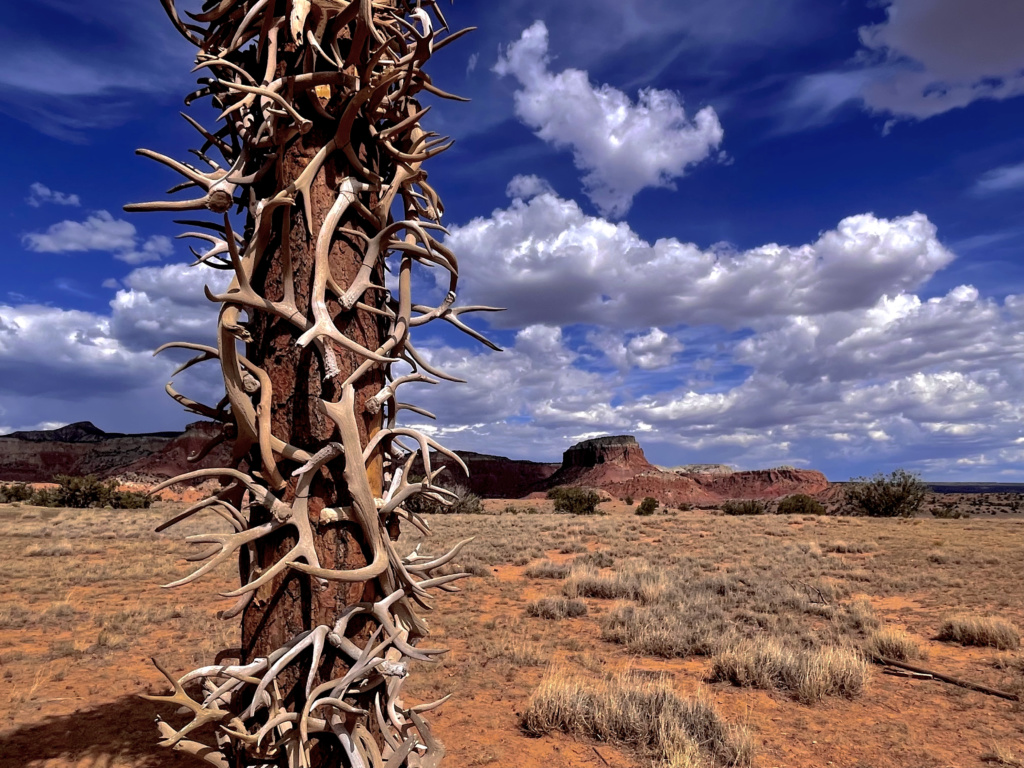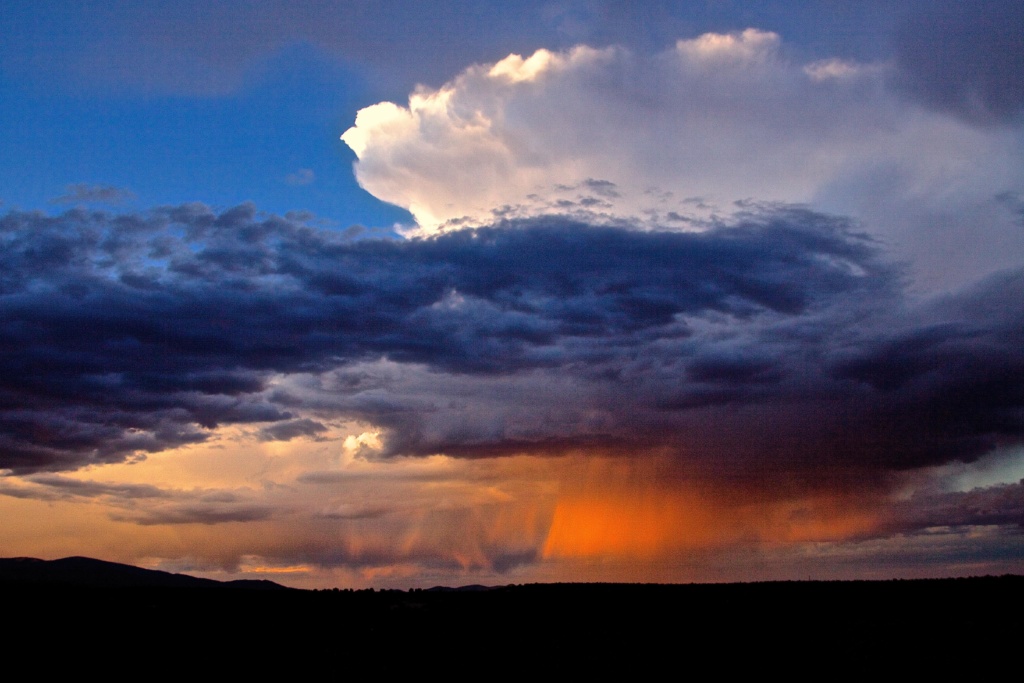
SPECIAL CORRESPONDENT Monica Devine is an author, photographer and sculptor. In her own words, “I am drawn to books and art, mountains and music, cities and seas, food and people. I am a “maker” and express my awe of the world through the creative arts of photography, writing, and hand-built ceramics.” She lives in Eagle River with her family. She travels often to New Mexico and offers this glimpse of a favorite place.
The writer D. H. Lawrence once said New Mexico was the greatest experience from the outside world that he had ever seen, and it changed his life forever. The way the light cuts sharp angles on the mountains at dawn. The way the dry desert air, and the smells of sage and piñon make your heart leap. It was dusty and undeveloped in his day, the 1920’s. But artists and writers from all over the world visited Santa Fe and Taos in those days, seeking the same near mystical experiences.

I first visited Santa Fe in the 1990’s on a pleasure trip to seek out the art and culture of an area I’d only read about in books. Viewed from a distance on a winding road leading to town, I was struck by the way the brown adobes appeared to spring up out of the earth as if they’d been born there. Not manmade, but earth made! Mud and clay in earth tones set against a turquoise sky aloft with popcorn clouds. I spent many a morning chasing light at dawn and dusk, with a camera slung around my neck and a water bottle dangling from my beltloop. They were right. The light and color of that exquisite landscape are precisely what brought me back time and again over the years, until one day I noted it felt like I belonged there.

Specifically, the “there” is Abiquiu, New Mexico, a small town of a few hundred people made famous by the late painter Georgia O’Keeffe. She painted sandstone cliffs, desert wildflowers, and the bleached bones of cattle from her adobe home on Ghost Ranch where she lived for many years. Today there is a deep, rich cultural history of Abiquiu, old stories that have been buried and resurrected to the delight of historians and travelers. The old village of Abiquiu consists of a post office, mercantile, library, a health clinic, Catholic church, the Abiquiu Inn and an ice cream shop or two. If you follow the path to the top of the mesa, you are stepping back in time to the early Spanish colonizers and Native American history, whose lives and cultures were closely intertwined.

Drive down the road another 12 miles to Ghost Ranch, an education and retreat center that offers scenic hiking trails, a cafeteria, outdoor swimming pool, and a plethora of workshops in painting, jewelry making, spiritual direction, poetry, horseback riding, writing and so much more. My favorite place on the ranch is the old adobe library that is Always Open. Check out books on the honor system. If you feel like going back in time to the bygone ways of the southwest, you can sit among the many stories that hover like ghosts in the room, and ponder what life was like when the land you’re standing on was a bona fide working cattle ranch. Or visit the Museum of Paleontology and the Museum of Anthropology both housed on the ranch and within walking distance of each other.

My visits to Abiquiu never grow stale. There is a special relationship I have with the land that generates wholeness and piece of mind. Maybe it’s the splash of the Milky Way, or the coyotes yipping out the back door. On the same note, the pull of Alaska never grows old either. Val Kilmer once said if you don’t pay attention to the yearnings of your heart, peace will always allude you. I have a foothold in two heartfelt places now, both of them steeped in rugged and raw beauty. Though everything is carved in sand, I’m confident there are many years left of new discoveries in both.

Monica Devine is the author of Water Mask, a collection of lyrical essays on landscape, art, family and culture.

Share this Post


